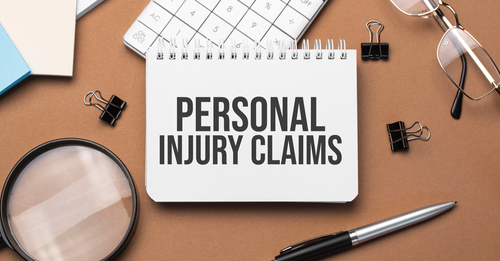The objectives of the Personal Injury Commission are outlined in section 3 of the Personal Injury Commission Act 2020. Among other things, the PIC aims to “resolve the real issues in proceedings justly, quickly, cost effectively and with as little formality as possible…”
Section 42 sets out the guiding principle to be applied to the PIC’s practice and procedure, being “to facilitate the just, quick and cost effective resolution of the real issues in the proceedings.” This is not dissimilar to the overriding purpose of the Civil Procedure Act 2005 and accompanying rules regarding the courts, being “to facilitate the just, quick and cheap resolution of the real issues in the proceedings.”
There is no doubt thus far that the PIC is operating with more formality than that applied previously, in the Claims Assessment and Resolution Service (CARS), in particular. Two areas of note are discussed below.
Documents in the Personal Injury Commission NSW
Procedural Direction PIC3 – Documents and late documents sets out the requirements for the preparation and lodgement of material in the PIC. The Procedural Direction provides a list of the expected supporting documents to be submitted by parties, and the order in which they should be compiled including statements, schedules of damages, reports, wage records etc.
The Procedural Direction, at 19, says:
19. Documents within each of the above categories should be arranged in chronological order, with the first in time placed first. Documents should be recorded in the relevant Commission form and appropriately paginated [emphasis added].
Pagination is a new requirement compared with the previous system. While this requirement in and of itself seems a straightforward one, practitioners are seeing an emerging trend among some Members (formerly Assessors in the previous system) of the PIC who are requiring much more than just pagination. Some Members are requiring parties to prepare a bundle of documents starkly resembling the tender bundles used by the courts, and including such additional documents as detailed chronologies and statements of issues.
This seems to be a departure from the overarching objective to resolve disputes with “as little formality as possible”. This is also of concern because the preparation of such documents is time consuming and therefore expensive, requiring practitioners to incur costs which outweigh the strict regulated legal costs provided for by the respective schemes. Time will tell whether the requirements will be clarified to address these concerns and a more uniform approach will be adopted by Members.
Experts
It is also noted that the PIC imposes compliance with Procedural Direction PIC4 – Expert Witness Evidence. Its requirements are similar to those in Schedule 7 of the Uniform Civil Procedure Rules 2005 – the Expert Witness Code, with which experts in court proceedings must comply. Practitioners should be aware of the requirement for compliance with Procedural Direction PIC4 when it comes to expert evidence used in PIC matters. This is another element of formality required by the PIC, that was not required previously and seems to be inconsistent with the overarching objective of limiting formality.
Technology and the Personal Injury Commission
Portal
Users of the online Portal that parties to disputes in the PIC are expected to use have been experiencing major problems, especially in the motor accidents division.
Until early May, there was no dedicated PIC Portal for motor accidents. Users were expected to use the SIRA Legal Portal, which was riddled with problems and glitches. A PIC stand-alone Motor Accidents Legal Portal was launched in early May and is separate to the SIRA Legal Portal. It appears the new portal is still a work in progress, with changes and enhancements being implemented regularly.
Video Conferencing
Procedural Direction PIC10 – Hearings during COVID-19 is still applicable, requiring hearings to take place by audio link or audio-visual link, unless parties show that it is not possible to use such means or there is prejudice to a party.
If a party wishes to seek to have a matter heard in person, it must make an application to the PIC and establish the following 11 factors (at 10 of the Practice Direction):
- whether the parties are legally represented and whether any of the parties are self-represented;
- where oral evidence is required, why leave to call oral evidence and/or cross examine witnesses should be allowed and on what issues;
- the name of each witness, the specific nature of the evidence of each witness and reliance the party intends to place on that evidence. The party must also comply with Div 5.1 of the PIC Rules and Procedural Direction PIC6 – Production of Information and Calling of Witnesses;
- an estimate of the time to be taken in relation to cross-examination of witnesses and the overall hearing;
- if there are issues of credit, why it is that such issues cannot be addressed by audio link or audio-visual link hearing;
- the degree of complexity of the legal and/or factual issues in dispute and why it is that such issues cannot be addressed by audio link or audio-visual link hearing;
- the importance and complexity of the subject matter of the proceedings and why it is that such issues cannot be addressed by audio link or audio-visual link hearing;
- whether any of the parties or witnesses require the services of an interpreter;
- whether the party seeking the in-person hearing is able to participate in a hearing by audio link or audio-visual link, either personally or at their legal representative’s office, and if not, why not;
- the preferred location of the in-person hearing and the extent of travel required by all parties, legal representatives and witnesses to attend at that location, and
- such further or other legal or factual matter or other relevant exceptional circumstance that the party wishes to rely upon in establishing that a hearing which is not in-person is potentially unfair.
While most matters can be heard with relative ease through audio-visual means, audio-only in practice is unlikely to be an appropriate long-term medium.
There are also examples of matters, without the exceptional circumstances that satisfy the above 11 requirements, being heard by audio-visual means and there being immense obstacles to their proper hearing. For example, there are situations where a claimant requires the support of their legal representatives in person, but their needs do not satisfy the above requirements and therefore they are forced to proceed with a hearing by audio-visual means. This is a problem because the technology does not allow for the connection of multiple devices, and therefore multiple cameras, from one room. This results in an awkward set-up where the claimant is required to sit next to their barrister while being questioned. Having more than one person sitting in front of a camera causes obstacles in terms of visibility and proper audio coverage. The problems are aggravated when interpreters are involved, often meaning hearings do not run successfully due to the technological obstacles and hindered communication.
Hearings via audio-visual means are far from seamless. While this Procedural Direction does appear to attempt to uphold the objective of limiting formality, it seems to ignore the practical problems faced by parties in conducting hearings this way, even where there are no exceptional circumstances.
General Updates
Production of Documents
Procedural Direction PIC9 – Production of Information and Calling of Witnesses outlines the PIC’s practice and procedure in relation to notices and directions issued for the production of documents, as well as the powers to compel persons to attend PIC proceedings.
Members have the power to order that a direction be issued for the production of documents, when requested by a party. Parties should be aware that a new form is available in the Motor Accidents Division for this purpose. See: https://pi.nsw.gov.au/lodge-a-dispute/applying-online.
Medical Assessments in Motor Accidents Division
Until May 2021, medical assessments in the Motor Accidents Division mostly could not take place in person due to Covid-19. There is a significant backlog of matters awaiting assessments in this Division, with many applications that were lodged before Covid-19 still on foot and not resolved. There is no indication of when they will be finalised. The PIC has advised that it is working to resolve this problem, however many practitioners are still experiencing concerning delays, not only in the scheduling of appointments, but overall, in communication about all aspects of medical assessments.
Decisions
Section 58 of the Personal Injury Commission Act, permits publication of PIC decisions.
The decisions are available through AustLII, Barnet Jade and LexisNexis. The following acronyms are used in the legal citations, depending on the type of decision/decision-maker. Note that the year appears in squares brackets.
- Presidential member: “NSWPICPD”. For example [2021] NSWPICPD 1.
- Non-Presidential member: “NSWPIC”. For example [2021] NSWPIC 1.
- Medical Appeal Panel: “NSWPICMP”. For example [2021] NSWPICMP 1.
- Merit Review: “NSWPICMR”. For example [2021] NSWPICMR 1.
- Merit Review Appeal Panel: “NSWPICMRA”. For example [2021] NSWPICMRA 1.
If you or anyone you know has been injured in an accident, you may be entitled to compensation. For more information, and to arrange a free, no-obligation assessment of your claim, please call Stacks Goudkamp on (02) 8294 7711, or alternatively make an online enquiry.



